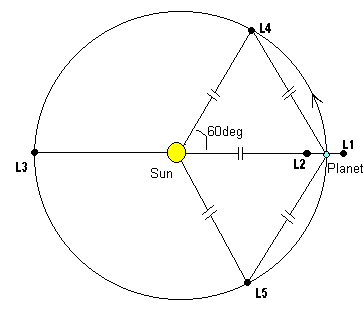
Disclaimer: Copyright infringement not intended.
Context
Aditya-L1 was launched by ISRO on September 2, 2023, with the mission of observing and helping us better understand the Sun. It arrives at its destination, L1 or the first Sun-Earth Lagrangian point, on January 6.
Details
Mission Overview
- Purpose: Aditya-L1, launched by ISRO, aims to study and observe the Sun comprehensively. It seeks to provide insights into various solar phenomena such as the solar corona, solar wind, charged particles, and eruptions that can impact space weather and technologies on Earth.
- Significance of Studying the Sun:
- The Sun's activities impact Earth's atmosphere, climate, and space-based technologies.
- Understanding solar processes like the solar wind, flares, and coronal mass ejections (CMEs) is crucial for space weather predictions.
- Aditya-L1's Objectives:
- Observe the ultraviolet radiation emitted from the solar corona to comprehend its behavior and energy dynamics.
- Monitor solar eruptions and the properties of charged particles in the solar wind.
- Provide early warnings of solar eruptions to mitigate potential disruptions to space-based technologies.

Why Aditya-L1 is Positioned at L1 (Lagrangian Point 1)
- What is L1: L1, or the first Lagrangian point, is a point of gravitational equilibrium between the Earth and the Sun.
- Advantages of L1 for Aditya-L1:
- Uninterrupted View: Placing Aditya-L1 at L1 ensures an uninterrupted view of the Sun as the spacecraft remains between the Earth and the Sun. It eliminates eclipses or interruptions caused by Earth's movements.
- Observation outside Earth's Atmosphere: Being outside Earth's atmosphere enables Aditya-L1 to observe ultraviolet radiation from the solar corona, which is not possible from Earth due to atmospheric absorption.
- Early Warning System: Continuous monitoring from L1 enables early detection of solar eruptions, allowing preparations to mitigate potential damages caused by these events.
Characteristics of L1
- Stability: L1 offers a relatively stable position due to the gravitational balance between the Earth and the Sun. However, it requires careful orbiting around the L1 point to maintain position.
- Unstable Nature: Despite being a stable point, L1 is fundamentally unstable. A minor disturbance can cause a spacecraft positioned at L1 to drift away, so Aditya-L1 is placed in an orbit around L1 to maintain its position.
- Orbit Duration: Aditya-L1 follows a complex orbit nearly perpendicular to the line joining the Sun and Earth, taking about 178 days to complete one full orbit around L1.
Comparison with Other Lagrange Points (L2)
- L2's Utility: While L1 is ideal for solar observation, L2 is useful for observing distant celestial bodies.
- Usage of L2: Spacecraft positioned at L2, such as the James Webb Space Telescope (JWST), Gaia, and Euclid, point away from Earth, enabling observations of deep space without interruptions from Earth's presence.
About Lagrange Points
- Lagrange points, also known as libration points, are specific regions in space where the gravitational forces of two celestial bodies, such as a planet and its moon or a planet and the Sun, create a stable equilibrium.
- These points were first discovered by Joseph-Louis Lagrange, a mathematician, and physicist, in the late 18th
- There are five Lagrange points labeled L1 to L5, each with unique characteristics and properties.
Understanding Lagrange Points:
- L1 Point: It lies on the line connecting the two massive bodies (e.g., Earth and the Sun) and is located closer to the smaller mass (e.g., Earth). Objects at L1 maintain the same position relative to both bodies and are affected by the gravitational pull of both.
- L2 Point: It is also on the line connecting the two massive bodies but lies on the opposite side of the smaller mass from L1. Satellites or space probes positioned at L2 are shielded from direct solar radiation and can be used for astronomical observations.
- L3 Point: Similar to L2, but located on the opposite side of the larger mass (e.g., the Sun) from L1. It is less stable than L2 and has been less explored due to its unstable nature.
- L4 and L5 Points: These points form equilateral triangles with the primary and secondary masses in their orbital paths. They are about 60 degrees ahead and behind the secondary body in its orbit around the larger body, creating stable regions where objects can remain relatively stationary.
Characteristics of Lagrange Points:
- Stability: L4 and L5 are considered stable equilibrium points, while L1, L2, and L3 are less stable and require constant correction due to gravitational perturbations.
- Natural Satellite Orbits: Some of these points have natural satellites, such as asteroids or Trojan asteroids, occupying them due to their gravitational stability.
- Use in Space Missions: Lagrange points have been utilized in space missions for various purposes, including astronomical observations, space telescopes (like the James Webb Space Telescope at L2), and potential locations for future space habitats or stations due to their relative stability.
- Spacecraft and Satellites: Placing spacecraft or satellites at Lagrange points requires less fuel for station-keeping compared to maintaining a geostationary orbit, making them advantageous for certain missions.

Conclusion
In conclusion, Aditya-L1's strategic positioning at the L1 Lagrange point allows uninterrupted solar observations critical for understanding the Sun's behavior, predicting solar events, and safeguarding space-based technologies on Earth.
MUST READ ARTICLES:
https://www.iasgyan.in/daily-current-affairs/aditya-l-1-launched
|
PRACTICE QUESTION
Q. Illustrate with examples of space missions positioned at Lagrange points and their contributions to scientific understanding and technological advancements. (250 Words)
|




